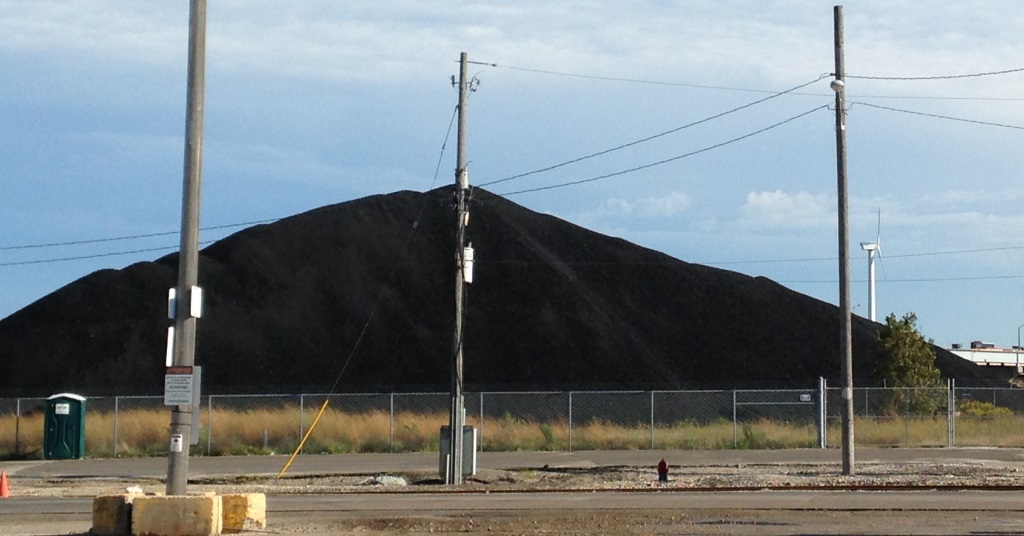Wisconsin Lags on Alternative Energy
Conservative businessman Matt Neumann blasts Republicans for state's "rotten" record on renewable energy.
Matt Neumann needs only one word to describe Wisconsin’s recent record on renewable energy. He calls it “rotten.”
Neumann, president of the Wisconsin Solar Energy Industries Association, a trade group, is equally concise in ascribing blame: “The big change happened in 2010, when the Republicans took control of the governorship and Legislature.”
Such criticism may have greater weight given that Neumann is a self-described conservative who a few years back launched SunVest, a Pewaukee-based solar installation company, with his father, Mark. The elder Neumann is a former two-term Republican congressman who unsuccessfully challenged Scott Walker for his party’s nomination for governor in 2010.
Renew Wisconsin, a nonprofit advocacy group, has tallied that the number of new solar electric installations in Wisconsin fell from 339 in 2010 to 136 in 2012, then rose slightly to 194 in 2013. Meanwhile, new solar installations nationally grew by leaps and bounds. More than 150,000 were added last year, about three times as many as in 2010.
For wind power, Renew Wisconsin reports that the number of commercial turbines placed in service plunged from 215 in 2008 to just 10 in 2012. Wind power in Wisconsin has since “flatlined,” according to Michael Vickerman, the group’s program and policy director. No new turbines were added in 2013 and 2014, and none are planned by state utilities, he says.
“We’re definitely falling behind,” says Gary Radloff, a researcher with the Wisconsin Energy Institute at the University of Wisconsin-Madison. “It’s pretty remarkable and measurable.” Wisconsin had been seeing growth in this area before “this massive drop-off in the last few years.”
A recent poll by a bipartisan research team found that more than 80 percent of Wisconsin voters support raising the state’s use of various forms of renewable energy, including solar, wind and biomass.
Radloff says Wisconsin utilities are not rushing to add renewables because they have already met the state’s sole mandate of having 10 percent of electric power come from these sources by 2015. Roughly half of this energy is purchased from other states, as the law allows.
Other states have set higher thresholds, encouraging further investment. Minnesota, for instance, wants utilities to get 17 percent of electric power from renewables by 2016, and 25 percent by 2025.
Neumann calls on the state to change its laws to clearly allow companies like his to install and lease solar systems without being considered utilities. “We are already doing this in other states,” he says. “Unfortunately we cannot do it in Wisconsin.”
And Neumann is fighting proposed changes in rate structures being sought by utilities, which would remove some of the economic advantages of using solar or pursuing conservation. These changes, which Neumann calls an attempt to “kill” solar, are now before the state Public Service Commission, appointed by the governor. He is optimistic they will be rejected.
Mary Burke, the Democratic candidate for governor, has blasted Walker for his record on renewable energy and pledged to boost state investment in wind power, biofuels and digester technologies that turn waste to watts.
Patrick did not say whether the governor supports raising how much electricity utilities must get from renewables beyond the current 10 percent, but cited a PSC memo that forecasts they will reach 11.5 percent by 2016.
Neumann, for his part, is optimistic, saying the climate for renewables will improve in Wisconsin as “conservatives recognize the economic opportunity.”
Bill Lueders is the Money and Politics Project director at the Wisconsin Center for Investigative Journalism (www.WisconsinWatch.org). The Center produces the project in partnership with MapLight.
The Center collaborates with Wisconsin Public Radio, Wisconsin Public Television, other news media and the UW-Madison School of Journalism and Mass Communication. All works created, published, posted or disseminated by the Center do not necessarily reflect the views or opinions of UW-Madison or any of its affiliates.
-
Wisconsin Lacks Clear System for Tracking Police Caught Lying
 May 9th, 2024 by Jacob Resneck
May 9th, 2024 by Jacob Resneck
-
Voters With Disabilities Demand Electronic Voting Option
 Apr 18th, 2024 by Alexander Shur
Apr 18th, 2024 by Alexander Shur
-
Few SNAP Recipients Reimbursed for Spoiled Food
 Apr 9th, 2024 by Addie Costello
Apr 9th, 2024 by Addie Costello






















The original entire concept of providing more instate production of renewable sources was to put a dent into the over $12 Billion annual dollars Wisconsin exports for the purchase of energy. The ignorant Republican legislature and Governor approved the purchase out of state of renewable sources to meet the current goal. Every dollar saved in the state churns the local economy here twice over. Instate production was the initial goal as a long term strategy that benefits our economy.
Now the monopoly utilities in a rush to crush consumer additions of renewable owned production have requested a rate change to the fixed monthly charge and larger charge for renewable producers. This move is all about crushing future expansion of consumer owned production, energy efficiency additions, and the only real competition in the past 100 years, that impact the residential sector the most. http://www.jsonline.com/business/mark-tauscher-to-speak-out-for-solar-power-as-utility-rate-hearings-begin-b99366099z1-278316851.html
This pathway continues to push Wisconsin downward as a progressive minded state and will damage all of us for decades to come. Wisconsin is an energy poor state lacking coal, oil, and natural gas options. Renewable sources are one of the few options available that can increase a diverse selection and offer competition and hedge against the ongoing price increases in fossil fuels.
Lack of natural fossil fuels, relatively poor availability of renewable energy sources, net import of energy, energy consuming industry, like pulp&paper – sounds familiar from North European point of view. But take notice that the geographic latitude of Milwaukee is some 43 degrees, while that of Helsinki is 60 degrees. In Europe you find Marseilles at 43. Spain has ambitious plans . Wisconsin should perhaps follow suit. We have this global climate change problem also to handle.
According to a histogram in news, situation is not so bad. But in the middle of winter when the day is short and the cold front from the north pushes in and brings freezing temperatures, causing energy consumption peaking while renewable energy sources are not available, we need something else. An alternative energy to alternative energy.